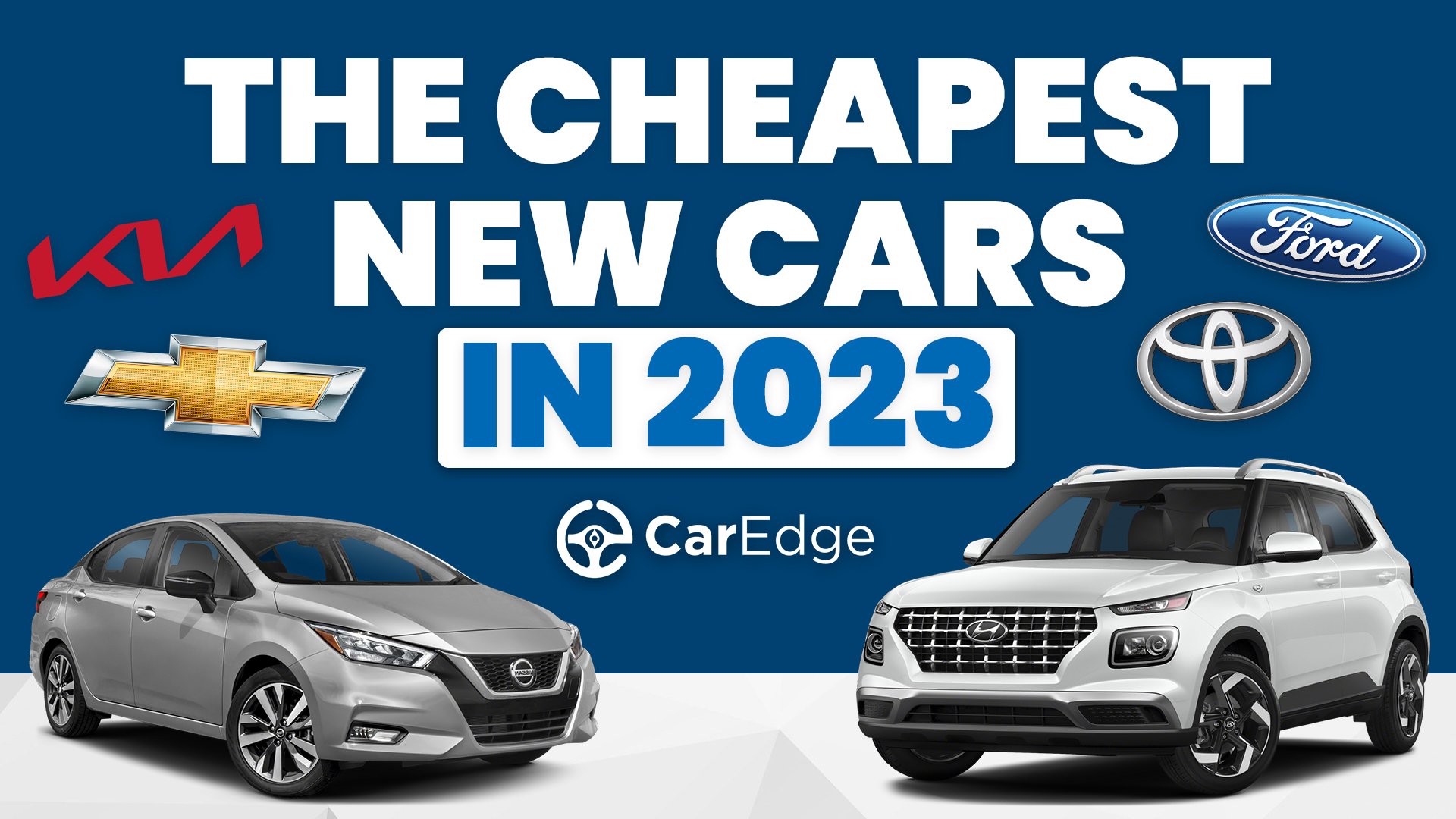Buying A Brand New Car: Your Ultimate Guide to a Seamless Purchase cars.truckstrend.com
The scent of a new car, the pristine paint job, the untouched interior – there’s an undeniable allure to buying a brand new vehicle. It’s more than just a mode of transport; it’s a significant investment, a lifestyle statement, and often, the realization of a long-held dream. For many, the decision to buy new is driven by the desire for reliability, the latest technology, and the peace of mind that comes with a full factory warranty.
However, the journey from contemplation to driving off the lot in your dream car can be complex, fraught with decisions, negotiations, and paperwork. This comprehensive guide aims to demystify the process of buying a brand new car, transforming what can seem like a daunting task into an exciting and rewarding experience. We’ll navigate everything from initial planning and research to sealing the deal and driving away, empowering you with the knowledge needed to make a smart, informed purchase.
Buying A Brand New Car: Your Ultimate Guide to a Seamless Purchase
The Allure of New: Why Buy Brand New?
While the used car market offers undeniable value, purchasing a brand new vehicle comes with a distinct set of advantages that appeal to many buyers. Understanding these benefits can help you decide if a new car is the right choice for you.
- Latest Technology and Features: New cars are at the forefront of automotive innovation. You gain access to the newest infotainment systems, advanced safety features (like adaptive cruise control, lane-keeping assist, and automatic emergency braking), and the most efficient engine technologies available.
- Full Factory Warranty: This is perhaps the biggest peace of mind factor. A new car comes with a comprehensive manufacturer’s warranty, covering major components for a set period or mileage. This significantly reduces the risk of unexpected repair costs in the initial years of ownership.
- Zero History: With a new car, you’re the first owner. There’s no history of accidents, unknown maintenance neglect, or previous owner habits to worry about. You start with a clean slate.
- Customization: You have the freedom to choose your preferred trim level, exterior color, interior materials, and optional packages directly from the factory or dealer inventory, ensuring the car perfectly matches your preferences.
- Lower Initial Maintenance: For the first few years, new cars typically require only routine maintenance like oil changes and tire rotations, often covered by complimentary service plans offered by some manufacturers.
- Financing Incentives: Manufacturers and dealerships frequently offer attractive financing deals, low APRs, or cash back incentives on new vehicles, which can make them more affordable than some used car options.
- Pride of Ownership: There’s a unique satisfaction that comes with being the first owner of a brand new vehicle, enjoying its pristine condition and the personal connection of breaking it in.

Pre-Purchase Planning: Laying the Groundwork
Before you even step foot in a dealership, thorough planning is paramount. This foundational stage will define your budget, narrow down your choices, and strengthen your negotiating position.

A. Budgeting and Financing: Know Your Limits
Your budget is the absolute first step. It’s not just about the sticker price; it’s about the total cost of ownership.
- Determine Affordability: Look beyond the monthly payment. Consider the total vehicle price, sales tax, registration fees, insurance, fuel costs, and estimated maintenance. A general rule of thumb is that your total car expenses (payment, insurance, fuel) shouldn’t exceed 10-15% of your gross monthly income.
- Financing Options:

- Dealership Financing: Convenient, but compare their rates with outside lenders.
- Bank Loans & Credit Unions: Often offer competitive rates and pre-approval, which gives you leverage at the dealership.
- Leasing: An alternative to buying, offering lower monthly payments but no ownership at the end of the term. Research if this is right for you.
- Understand APR and Loan Terms: A lower Annual Percentage Rate (APR) means less interest paid over the life of the loan. Shorter loan terms (e.g., 3-5 years) mean higher monthly payments but less total interest. A longer term (e.g., 6-7 years) reduces monthly payments but significantly increases the total interest paid.
- Down Payment: A larger down payment reduces your loan amount, lowering monthly payments and total interest, and can also help secure a better APR.
B. Researching Your Needs: What Car Fits Your Life?
This is where you match your lifestyle with the right vehicle type.
- Lifestyle Considerations: Commute distance, family size, cargo needs, specific hobbies (e.g., towing, off-roading).
- Vehicle Type: Sedan, SUV, truck, minivan, hatchback, electric vehicle (EV), hybrid? Each has its pros and cons regarding space, fuel efficiency, and driving dynamics.
- Must-Have Features vs. Nice-to-Haves: Prioritize safety features, fuel economy, and reliability. Distinguish between essential features (e.g., adequate cargo space for your family) and desirable luxuries (e.g., panoramic sunroof).
- Reliability Ratings & Safety Scores: Consult reputable sources like Consumer Reports, J.D. Power, and the National Highway Traffic Safety Administration (NHTSA) or Insurance Institute for Highway Safety (IIHS) for crash test ratings.
- Fuel Economy: Factor in the cost of fuel based on your typical mileage. EVs and hybrids offer significant savings here.
C. Trade-In Considerations: Your Old Car’s Value
If you plan to trade in your current vehicle, do your homework first. Get independent appraisals from at least two sources (e.g., Kelley Blue Book, Edmunds, Carvana, CarMax) before approaching the dealership. This ensures you know your car’s true market value and prevents the dealer from lowballing you. It’s often best to negotiate the price of the new car separately from the trade-in value.
The Shopping Experience: From Online to On-Lot
With your budget set and your ideal car in mind, it’s time to engage with the market.
A. Online Research and Configuration
- Manufacturer Websites: Use "build and price" tools to configure your desired trim, options, and calculate the Manufacturer’s Suggested Retail Price (MSRP).
- Third-Party Review Sites: Edmunds, Kelley Blue Book (KBB), Consumer Reports, and various automotive review sites provide detailed specs, expert reviews, and user feedback. They also offer pricing tools to help you understand fair market value and invoice pricing.
- Check Inventory: Most dealership websites allow you to browse their current inventory. Identify specific VINs (Vehicle Identification Numbers) of cars that match your desired configuration.
B. Dealership Visits and Test Drives
- Schedule Appointments: Call ahead to ensure the specific model and trim you want to test drive are available.
- Test Drive Checklist: Don’t just drive around the block. Test the car on various road conditions (city, highway, bumps), practice parking, check visibility, assess seat comfort, and play with the infotainment system. Bring family members if their comfort is a factor.
- Don’t Rush: Take your time. Test drive multiple vehicles, even competitors, to get a feel for what you truly prefer. Be firm about not discussing price until after the test drive.
C. Understanding Trim Levels and Options
Automakers offer vehicles in various "trim levels" (e.g., LX, EX, Touring), which bundle different features. Beyond trims, there are often stand-alone options or packages. Understand what’s included in each and whether it’s worth the added cost, both for your enjoyment and potential resale value. Sometimes, a higher trim offers better value than adding multiple individual options to a lower trim.
The Negotiation Process: Getting the Best Deal
This is often the most intimidating part, but armed with knowledge, you can negotiate confidently.
A. Pricing Components
- MSRP (Manufacturer’s Suggested Retail Price): The sticker price. It’s a suggestion, not a fixed price.
- Invoice Price: What the dealer paid the manufacturer for the car. This is your target starting point for negotiation (aim for a few percent above invoice).
- Destination Charge: A non-negotiable fee for shipping the car from the factory to the dealership. It’s often included in the MSRP.
- Dealer Mark-up/Profit: The difference between invoice and MSRP. This is where negotiation happens.
- Dealer Fees: "Doc fees," "prep fees," "advertising fees." These vary by state and dealership. Some are legitimate, some are pure profit. Ask for an itemized list and try to negotiate them down.
- Sales Tax: Varies by state.
- Registration/Tag/Title Fees: Government fees, non-negotiable.
B. Negotiation Strategies
- Separate Everything: Negotiate the price of the new car first. Once that’s agreed upon, discuss your trade-in. Finally, talk about financing. Combining them confuses the deal and makes it harder to see where you’re losing money.
- Know Your Target Price: Aim for a price slightly above the invoice, giving the dealer a reasonable profit while getting you a good deal. Websites like Edmunds or KBB provide "fair market value" ranges.
- Be Prepared to Walk Away: This is your strongest leverage. If the deal isn’t right, be ready to leave.
- Don’t Fall for High-Pressure Tactics: Salespeople work on commission and quotas. Stick to your research and your budget.
- Get Quotes from Multiple Dealers: Contact several dealerships (even out of town) via email or phone once you know the exact car you want. This fosters competition.
- Hidden Fees Awareness: Scrutinize the final paperwork for unnecessary add-ons or inflated fees.
C. Extended Warranties and Add-ons
Dealerships often push extended warranties, paint protection, fabric protection, and VIN etching. While some extended warranties can be worthwhile for specific situations (e.g., highly complex luxury cars), many are overpriced and can be purchased later or from third parties for less. Most paint and fabric protection products are vastly overpriced for what they offer. Carefully evaluate if these add-ons truly provide value for you.
Finalizing the Purchase and Taking Delivery
You’re almost there! This final stage requires careful attention to detail.
A. Reviewing the Contract
- Read Every Line: Do not sign anything you haven’t read and understood.
- Verify Numbers: Ensure the agreed-upon price, trade-in value, financing terms (APR, loan term, monthly payment), and all fees match what you discussed.
- No Blank Spaces: Ensure all sections are filled in.
- Understand Contingencies: Are there any conditions (e.g., financing approval pending)?
B. Insurance
You must have proof of insurance before you can drive your new car off the lot. Shop around for quotes from multiple providers in advance to ensure you get the best rate.
C. Taking Delivery
- Thorough Inspection: Before signing the final paperwork and taking possession, inspect the car thoroughly in daylight. Check for any scratches, dents, or damage. Verify all features and options are present and working (lights, AC, radio, power windows, navigation).
- Understand Controls: Have the salesperson walk you through the car’s major controls and features. Ask about maintenance schedules and owner’s manual location.
- Owner’s Manual & Service Records: Ensure you receive the owner’s manual and any initial service records or temporary registration.
Table of Sample Costs/Considerations for Buying a New Car
(Note: These are illustrative ranges. Actual costs vary significantly based on vehicle type, brand, location, and specific options.)
| Cost Category | Description | Estimated Range (Example) |
|---|---|---|
| MSRP (Sticker Price) | Manufacturer’s Suggested Retail Price, including options | $25,000 – $75,000+ |
| Destination Charge | Fee for shipping car from factory to dealer (non-negotiable) | $900 – $1,500 |
| Negotiated Price | The actual price you agree to pay for the car before taxes/fees | 2-8% below MSRP (varies greatly by model/demand) |
| Dealer Prep/Doc Fee | Fees for preparing paperwork and vehicle (highly variable & negotiable) | $0 – $800 (state limits apply in some areas) |
| Sales Tax | State/local tax on the purchase price | 0% – 10%+ (e.g., 7% of $30,000 = $2,100) |
| Registration/Tag/Title | Government fees to register the vehicle and get license plates | $50 – $500 (annual renewal thereafter) |
| Financing Costs | Total interest paid over the loan term (depends on APR, loan length, down payment) | APR: 0% – 8%+ (e.g., $1,500 – $8,000+ over 5 years) |
| Insurance Premiums | Cost of car insurance (annual/monthly) | $1,200 – $3,000+ per year (depends on driver, car, location) |
| Fuel Costs | Estimated annual cost of gasoline/electricity | $1,500 – $3,000+ per year (highly variable) |
| Routine Maintenance | Oil changes, tire rotations, fluid checks, etc. (first few years) | $100 – $500 per year (often covered by warranty initially) |
| Extended Warranty | Optional coverage beyond factory warranty | $1,000 – $4,000+ (often negotiable) |
Frequently Asked Questions (FAQ)
Q1: Is it better to buy new or used?
A1: Buying new offers peace of mind with a warranty, the latest features, and no prior history. Buying used can save you money on depreciation and the initial purchase price. The "better" option depends on your budget, priorities, and risk tolerance.
Q2: When is the best time to buy a new car?
A2: Generally, the end of the month, quarter, or year are good times, as dealerships try to meet sales quotas. Also, when a new model year is released (often in late summer/fall), dealers are eager to clear out the previous year’s inventory.
Q3: What’s the difference between MSRP and Invoice Price?
A3: MSRP (Manufacturer’s Suggested Retail Price) is the sticker price the manufacturer recommends. Invoice price is what the dealer paid the manufacturer for the car. Your negotiation should aim for a price slightly above invoice, not necessarily below MSRP.
Q4: Should I tell the dealer I have a trade-in immediately?
A4: It’s often recommended to negotiate the price of the new car first, then discuss your trade-in as a separate transaction. This prevents the dealer from manipulating figures to make it seem like you’re getting a good deal on one while losing out on the other.
Q5: Can I negotiate the destination charge?
A5: No, the destination charge is a non-negotiable fee set by the manufacturer to cover transportation costs from the factory to the dealership. It’s often included in the MSRP.
Q6: What’s a good credit score for financing a new car?
A6: Generally, a credit score of 700 or above is considered good and will qualify you for the most competitive interest rates. Scores below that may still get approved but with higher APRs.
Q7: How long should a new car last?
A7: With proper maintenance, modern cars are built to last 150,000 to 200,000 miles or more, often 10-15 years. The initial reliability of a new car means fewer unexpected issues in its early life.
Conclusion
Buying a brand new car is an exciting milestone that, when approached with knowledge and strategy, can be a truly rewarding experience. By diligently researching your needs, understanding the financial implications, and mastering the art of negotiation, you can navigate the dealership landscape with confidence. Remember to separate the deal’s components, scrutinize every piece of paper, and prioritize your long-term satisfaction over short-term pressure.
The journey to owning a new vehicle is not just about the transaction; it’s about finding the perfect partner for your daily drives and adventures. With careful planning and informed decisions, you’ll soon be enjoying the unparalleled joy and peace of mind that comes with driving a brand new car, tailored perfectly to your life.

